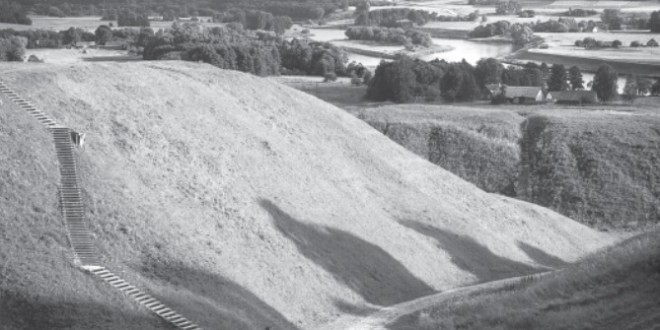by Gloria Kivytaitė O’Brien
![]()
LITHUANIA IS A LAND OF MANY LAKES AND, IT seems, even many more hills. The oval, flat-topped shapes and looming aspect of many hills identify them as hillforts (piliakalniai), or the remains of ancient fortified places. There are more than 800 places in Lithuania that are called piliakalniai. A true hillfort is an earthen elevation containing the remains of a fortress settlement and, ideally, ancient burials. They can range from one meter to many tens of meters in height. The most important, historically significant, date from the era of conflicts with the kryžiuočiai (Teutonic Knights). They have been investigated, some of them many times, by archaeologists, and many are fitted with stairways leading to the top. Other earthen mounds, also called piliakalniai, contain ruins from later eras, which can be just as interesting, but historically less important. The name piliakalnis arose not from the Lithuanian noun pilis (fort, castle) but from the verb pilti (to pour); many of these mounds were built by people intent on erecting a fortification, bringing earth to the location in order to do so. Other mounds were formed by man and nature working together.
Lithuania’s State Cultural Heritage Commission maintains a list of piliakalniai, reviewing information provided to them, usually by archaeologists, sometimes by ordinary citizens who stumble upon a possible hillfort hidden, as many of them are – overgrown by forests in the intervening years. Not every hill is an actual hillfort; there are of course many natural mounds in the country consisting of nothing but dirt.
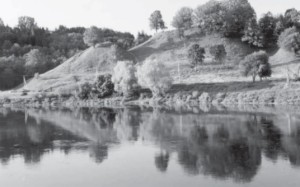
To be acknowledged as a piliakalnis, a site must include an obvious fortification, such as a rocky rampart or moat, and archaeological findings like ceramics or ancient burials. Also considered, is the hill’s role in tradition and many generations of folklore. The Heritage Commission, after what could be years of investigation, having approved a site’s inclusion in the list, assigns a code number, then monitors and reports on events from then on. Piliakalniai are visited by tourists, schoolchildren, archaeologists, historians, and adherents of the old, resurgent, Baltic pagan religion, now known as Romuva. Let us join those visitors, and look at just a few of these places, distinct parts of Lithuania’s heritage.
Alytaus piliakalnis
Legend talks about Mirgrausėlė, daughter of the noble Raimonas, and Alytėlis, son of Duke Smūkninas. In spite of their love for each other, Mirgrausėlė had to become a vaidilutė (priestess.) A small fort controlled by Raimonas, one of a defensive network surrounding a valley (now Alytupio slėnis) of the Nemunas river, was one of a group of forts attacked by the kryžiuočiai in 1377; all of Raimonas’s warriors fell in battle, and only Alytė- lis was left alive and escaped. He rode to the hill of Gabija where Mirgrausėlė tended the sacred fire, hid her away, and returned to battle, where his courage did not prevent his death. Mirgrausėlė cried so bitterly and for so long that her tears began to run in a stream to the Nemunas; it is said that the little stream, Alytupis, continues to run into the Nemunas today.
Another legend tells the story of the convent that was built here and later sunk into the bottom of the hill. As it was drawn into the earth, its bell fell into the Nemunas. Even until now, residents solemnly declare, this bell can be heard ringing the call for the twelve o’clock Mass every Sunday. Alytaus piliakalnis is an unusual rectangular shape, 25 x 15 meters wide, 20- 25 meters high. Archaeologists found remains of a burnt cultural layer, with several examples of ceramics, sword handles, spurs and spikes. These items are preserved in the Alytus museum.
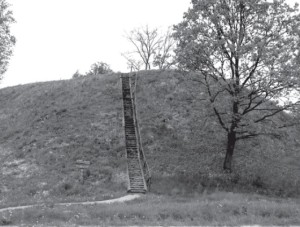
Daugai
Archeologists investigating this hillfort, in the Alytus region, also known as “Salos kalnas” (“Island’s Hill”) and “Pilaitės kalnas” (“Little Castle’s Hill”), found ceramics dating to the 13th-14th centuries, and are guessing that the small fort (from 6 to 15 meters high, 30 x 35 meters in area) may have been an early-warning type of defense location. Local legend says that the entire garrison was killed in an attack by the kryžiuočiai, leaving only the duke’s daughter, Daugė, who purposely drowned in Didžiulio lake rather than be taken in slavery.—
Geruliai
This hill, at Butrimonis township, is 8 to 11 meters high, and 45 x 21 meters across, surrounded by a large rampart, from 1 to 4.5 meters high. There are four deep pits, about 3.5 meters wide, and one trench 23 meters long, which, it is said, were excavated by German soldiers searching for historical finds during the First World War. Examples of ceramics characteristic of the first millennium have been found by archaeologists and are currently preserved in the National Museum in Vilnius.
Kernavė
Archaeologists have been digging here for many years, and it is well-established as a medieval capital of the Grand Duchy, whose chronicles state that Duke Kernius built this, the country’s first capital. According to the chronicles, Kernius was a grandson of the legendary Palemonas, who was, say the chroniclers, a member of Roman emperor Nero’s clan. Leaving a decaying Rome with a group of Roman aristocrats and heading north, they reached the Baltic Sea and the Dubysa river via the Nemunas delta, where they settled and eventually gave rise to the Gediminid dynasty. Tradition holds that Kernius upon his death was given full ancient pagan cremation rites, and his ashes were spread at the top of the hillfort. Kernavė was first mentioned in the Livonian Rhymed Chronicle of 1279.
Another story (believe it or not): Somewhere in Kernavė, archaeologists supposedly found an underground path leading to Trakai and Vilnius. Grounded with split logs, this path ends in Kernavė with iron gates; in Trakai with silver gates; and in Vilnius, with gold gates!
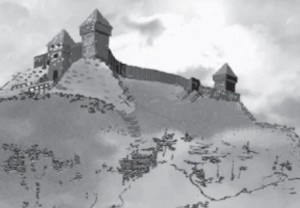
There are five large hillforts in Kernavė; all of them have been well-manicured and fitted with stairs. Kernavė has a fine museum that has benefited from the investigative work of archaeologists and historians; its exhibits range the complete scope of historical subjects from prehistoric times to the end of the 18th century. The hillforts of Kernavė have yielded a storehouse of items and remains that have enriched the study of Lithuanian history for many years. A famous international folklore festival takes place in Kernavė every summer.
Papėčių piliakalnis
This hillfort is, like most, oval in shape; 24 x 19 meters in area, but it is oriented north to south instead of east and west, as are most others. Its slopes are 7 to 10 meters in height, and from the top, afford a wide, beautiful view of the lakes of Dzūkija. It is said that long ago there was a heavy golden chain protruding from the hill, and folks got together and pulled it. But the chain broke off and the end retreated back into the hill. If anyone tried to pull it out, he would be forcibly dragged into the underground.
Paveisininkai
By the shore of Veisėjo lake in Lazdijai, a city in Lithuania’s southwest, and 7 kilometers from the border with Poland stands a hillfort also known as “Jotvingių Piliakalnis.” Jotvingians, one of several Baltic tribes, inhabited this territory until about the 13th century. A center of the Jotvingians, Paveisininkai, was destroyed by the kryžiuočiai in 1278–1283. About this time, their Duke Skomantas tried to unite and organize scattered Jotvingian tribes, but he was unsuccessful. The Teutonic Knights were by this time well on their way to the complete conquest and destruction of the Baltic Prussians, and since some Jotvingians were allies of the Prussians, they were caught up in this and suffered the same fate. By the 15th century, the remaining Jotvingians had been assimilated by the Lithuanians. Jotvingių Piliakalnis is all that is left of them, except for some place names that might be recognizable to a scholar. Archeologists digging in the area found graves characteristic of Jotvingians. It is known that they cremated their dead, and buried their remains in stone boxes. The graves are known as krūsniniai kapai, from the Lithuanian word krūsnis, meaning “a pile of stones.”
Pivašiūnų piliakalnis
This hill, 20 meters high, 52 x 23 meters in area, protected on the south and west by the Alovės river, is said to have housed a pagan shrine, and belonged to the son of Duke Margiris. Legends say that it started as just a small hill, but a constant flow of devout pagans would visit the shrine often, each man carrying a hatful of earth; in that way, this hillfort grew to its present dimensions.
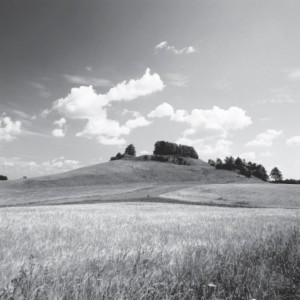
This site, which had its useful lifetime during the first millennium, lies, like many, at the edge of a forest, and is overgrown with birches and small greenery, the rest of the hilltop lying fallow.
Poteronių piliakalnis
Alytiškiai (residents of Alytus) call this hillfort “Giants’ Hill.” They say the place is haunted; that a vaidilutė in white robes appears, building a fire, crying and moaning, not stopping until the roosters crow at daybreak. Earlier, at the hill’s top, there had been a pit, seeming so deep that a rock thrown into it would fall, and fall, until finally it would hit some kind of mysterious resounding thing. Shepherds later filled the pit with branches and leveled it off. Others say this was a place where people gathered to pray and brought their animals for pagan rites of sacrifice.
Punia
This hill, located between Alytus and Birštonas, aka Margirio pilis (Margiris’ Castle), is possibly the most famous and one of the largest hillforts in Lithuania, being 155 meters long, and 44 meters in height. Chronicles tell the story of Pilėnai (Castle dwellers): Realizing that they had no chance of winning through a siege of their castle by the kryžiuočiai, the residents and defending warriors under Duke Margiris – rather than allow themselves, their families and their wealth to be taken by the kryžiuočiai – built a bonfire, piled onto it every single thing of value, at the last adding the bodies of their wives, children and elderly, finally themselves falling on their swords atop the pyre. So the kryžiuočiai were thwarted in their expectations of loot and slaves – bitterly disappointed, they went home with nothing. Punios piliakalnis has traditionally for long years been the presumed location of the Pilėnų fort, though the current belief is that it must instead have been somewhere in Žemaitija. But a memorial rock remains at Punia, bearing the words of the famous Lithuanian poet Maironis: “The grave of Margiris’ giants.”
During recent years, numbers of people have traveled to Punia to join in the “Šviežia duonelė” (fresh bread) festival, part of St. Anne’s “Oninių” feast, held annually in July, when many well-known ethnographic ensembles converge on the small village. Spectators are drawn into the games and activities, and dance through the night around a bonfire, a pleasant feature of many Lithuanian celebrations.
Rudaminos piliakalnis
Rudaminos castle was built by Duke Ringaudas, and it is said to have been the location where King Mindaugas received the crown of Lithuania. The fort was set up in an area replete with natural obstructions and hindrances that contributed to its general safety. Its hill was surrounded at bottom by wetlands and bogs, especially on the east and north, as well as a heavy rampart from the south and all around. These precautions, however, did not help when this fort was destroyed in the 13th century by the kryžiuočiai.
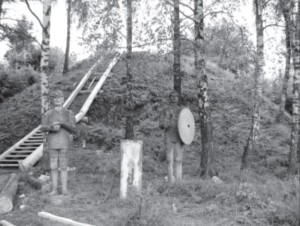
Sauserių piliakalnis
Located in the Kretinga region, this hillfort is 35 meters high and 60 x 30 meters in area. In ancient times, a wooden fort belonging to the Kuršiai (Curonians, one of the Baltic tribes) stood there. Among other archaeological finds, axes dated to the period 700–500 B.C. (bronze and iron ages) have been unearthed in this location, but there is no clear evidence that those artifacts did not flow down the river from Semba or the lower Nemunas. The fort was protected by the deep Minija river close by, and by a moat and a defensive embankment.
Zilvios piliakalnis
This hillfort is found against the edge of the forest, and when discovered, was well-covered by trees and greenery, much of which has since been cut. Stairs have been added, to make the place more inviting for visitors. On the northern side, there is an embankment 4 meters high, 40 meters long, 17 meters wide, part of it leading to a moat, 2.2 meters deep. Investigators think this site was a well-fortified location, part of a strong Nemunas defense system. Legend says that seventy of this hillfort’s garrison troops were condemned for cowardice, and that each year on St. John’s Night, they exit the hilltop changed into hares. Some hunters claim to have shot at them, but their bullets do no harm.
Voruta (Seimyniskėliai)
We know that King Mindaugas reigned during the 13th century, but where was his castle situated? That has been a tantalizing mystery for historians, who were hindered by the scarcity of written historical information. Mindaugas’ castle was mentioned only three times in all the annals and chronicles, and only once was a name given: “Voruta.” Historians have been studying and speculating, and archaeologists have been digging for many years, and no less than fourteen locations have been suggested as possibilities. But now, it seems that general opinion has reached a consensus, and the Šeimyniškėliai hillfort in Anykščiai is now acknowledged as “Voruta” by a majority of influential historians, archeologists and philologists. Lithuania’s Ministry of Culture approved a project to erect a reconstructed wooden fort on the site, which is now a busy tourist magnet and educational center. Archeologists cut a “slice” down the side of the hill, exposing cultural layers and allowing them to salvage artifacts that are now displayed in a museum at the location. Visitors are invited to try their skill with a bow, or to hurl a spear, perhaps to taste an “elixir of strength and accuracy” (stiprybės ir taiklumo), drunk from a bull’s horn.
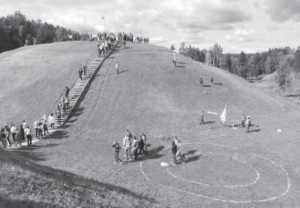
These hillforts that we have described are only a small percentage of Lithuania’s existing roster of interesting piliakalniai. Each one has its own unique history, and fantastic stories are told about many of them, limited only by people’s creative imagination. The mere fact that there are so many of them is itself impressive. They are relics of a small nation’s era of greatness, a source of pride, and proof of our ancestors’ determination that their land should remain free of foreign domination or influence.
 DRAUGAS NEWS Lithuanian World Wide News in English
DRAUGAS NEWS Lithuanian World Wide News in English
